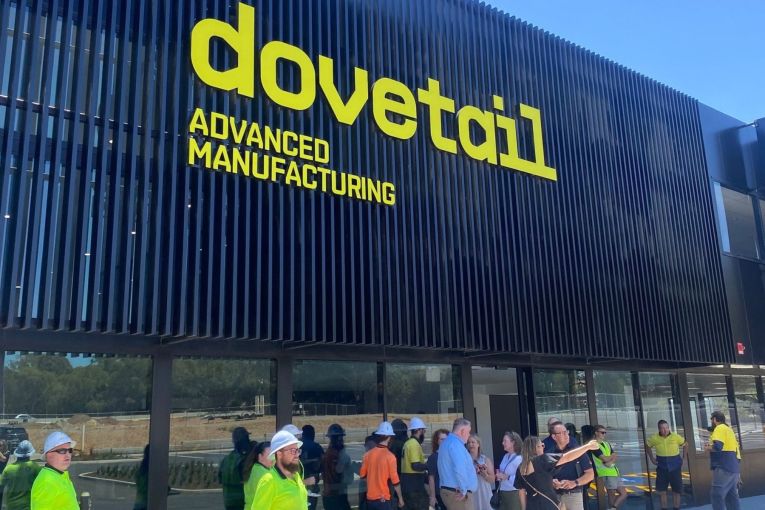The case of Australia’s missing family-size apartments

Australia’s unique housing landscape has solidified us as a culture that views houses as the gold standard of family living.
However, with a chronic undersupply of homes, record-high construction costs, reluctant-to-downsize older Australians, and a cost-of-living crisis, apartments are in hot demand.
However, there has been an ongoing lack of supply of larger apartments.
“Nationally, there are significantly fewer three- or four-bedroom units compared to the housing sector,” CoreLogic economist Kaytlin Ezzy said.
“Three or more bedroom houses make up about 90 per cent of the market for house listings, whereas for units, it’s only about 29 per cent.”
Census data from 2021 paints a similar picture. Three or more bedroom houses accounted for 90.2 per cent of dwellings nationwide, compared to just 16.6 per cent for apartments with the same number of bedrooms.
Developers continue to face their own pressures. So, despite the National Housing Accord’s target of building 1.2 million new homes, the solution hasn’t been as simple as quickly building lots of new three- and four-bed apartments.
There is also a cultural shift around housing, as Australians grapple with a record population boom during a period of historic housing shortages and unaffordability.
Shifting cultural perspective
The Aussie dream of a quarter-acre block is entrenched in our cultural psyche.
You might like
“We’ve got a cultural view that the only way to raise a family in Australia is to do it in a three-bedroom house in suburbia,” RMIT University urban planning expert Liam Davies said.
“In a lot of cases, developers have been building more bedrooms in separated houses and townhomes, as opposed to apartments, and this is a development pattern that has been going on since the ’60s or ’70s.”
According to the Australia Institute, house prices have risen out of step with income – 25 years ago average houses cost nine years of the average household income, now they cost 16½ years.
This chronic affordability crisis renders people wanting to buy in areas they love, with amenities and good transport links, looking to apartments as their alternative.
In other words, price-point pressures are forcing Aussies to prioritise lifestyle above space.
We’re waking up from the dream.
The Apartments and Developments (part of View Media Group) 2024 Buyer Inquiry Report found that the off-the-plan residential market has shifted significantly.
“It is evident buyers are focusing less on the Australian dream of owning a quarter-acre block and instead are looking to smaller, well-located off-the-plan developments with long-term growth potential,” View Media Group data analyst Renee Ch’ng wrote.

Australians are realising they don’t necessarily need a house in the ‘burbs. Photo: Getty
A market mismatch
A market plagued by high construction and building costs, shortages of skilled tradies, slow approvals and government red tape means developers face significant pressures.
“The development construction sector is a key part of this [issue], and we need to acknowledge that they are subject to market forces,” Davies said.
“We cannot expect them to be non-profit. They are for-profit entities. If we want some form of outcome from them, we need to make it viable and feasible for them, which means that we need to either offset cost increases or lower cost inputs.”
As it stands, smaller apartments built at scale are favoured in terms of profit margin, while larger dwellings carry a luxury label and hefty price tag.
Stay informed, daily
That is, building smaller one- and two-bedroom apartments is more profitable for developers than creating larger dwellings.
“Broadly speaking, developers tend to favour smaller units. For the same footprint, they can get out two or three units and sell it for maybe 20 or 30 per cent extra than they would a single unit in that larger format,” Ezzy said.
To bridge the profit gap, many three or more bedroom apartments have a luxury label and hefty price tag. But this appeals only to a small percentage of the market.
“Developers have a price point that they can deliver a three-bedroom apartment – and there’s low demand at that price,” Davies said.
“Meanwhile, consumers have a demand for three-bedders, but there’s none at their price point.
“What you’ve got is a market mismatch.
“People want what the developers can’t or won’t deliver, and developers will deliver what people don’t want or can’t afford.”
He believes the ideal solution is to be more prescriptive about the types and cost of dwellings required as part of the housing push.
“It’s a very simplistic argument of ‘you build more supply, the price will come down’,” he said.
“To an extent, that might happen in some areas, but it’s going to be locationally variable.
“We need to be much more intentional about where we want new housing to go and what we want it to cost. And if that becomes a starting point, then we need to think about the policy levers that we need to use to make that so.”
Who’s bucking the trend?
While challenges remain, some developers are responding to community needs from multiple market sectors.
Mirvac is a prime example – its new Sydney Harbourside Residences tower is 45 per cent made up of three-bedroom dwellings with spacious floor plans.
Its upcoming Prince & Parade project in Melbourne’s Brunswick will offer a range of one to four-bedroom residences, similar to Mirvac’s High Forest development in Sydney’s Hills District.
While those price points may better suit down-sizers than first-home buyers, developers such as Nightingale Projects do provide sustainable, community-focused and low-cost villages with an array of dwelling types. Among them are its Wilam Ganga project in Melbourne, which has three-bedroom double-storey apartments.
One upcoming project is Nightingale Brompton in South Australia. It is part of the Renewal SA partnership with MAB Corporation to revitalise the 5.8-hectare former Brompton Gasworks site into a hub with a boutique hotel, integrated commercial and retail, employment hub and more than 800 residences.
The lack of larger new apartment stock is a nationwide issue but is felt more acutely in the major cities. However, some areas are making headway.
“Areas that show indications of higher stock [of three or more bedroom apartments] include Melbourne, Perth and regional NSW, as well as some markets in regional South Australia and Western Australia,” Ezzy said.
The Apartments and Developments 2024 report predicts Australia’s apartment market is poised for a year of steady growth.
This article is from View.com.au. Read the original here









